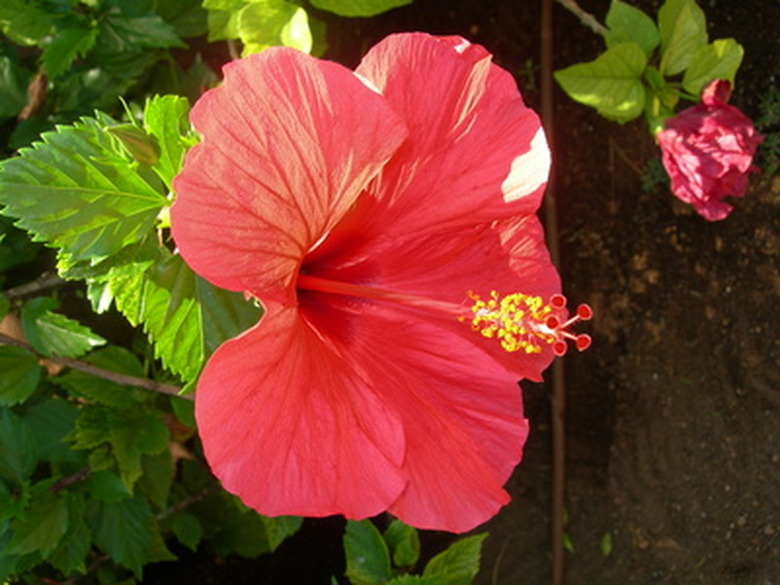How To Care For Hibiscus Plants Indoors
Things Needed
- Water-soluble flowering plant fertilizer
- Pruning shears
Hibiscus, a tropical shrub, typically cannot tolerate prolonged freezing temperatures. Chinese and tropical hibiscus species are especially cold-tender and cannot grow in climates where temperatures approach freezing. If you live in a non-tropical climate with cold winters, grow hibiscus plants in containers and bring them indoors during winter. Hibiscuses bloom readily, even indoors. The large, brightly-colored and showy flowers typically grow 2 to 12 inches in diameter with long, arching stamens. To care for hibiscus plants indoors, water regularly but do not over-saturate the plant.
Step 1
Position your hibiscus in bright, direct to partial sunlight, such as beside a south-facing window. Place your hibiscus outdoors during the warmer spring and summer months, but keep the hibiscus out of hot, full-sun and provide some shade in the afternoon.
- Hibiscus, a tropical shrub, typically cannot tolerate prolonged freezing temperatures.
- Chinese and tropical hibiscus species are especially cold-tender and cannot grow in climates where temperatures approach freezing.
Step 2
Water your hibiscus from spring through fall whenever the topmost layer of potting soil begins to feel dry, providing water until it drains from the bottom of the pot. You may need to water daily during the hottest part of summer, but don't allow the soil to become waterlogged.
Step 3
Feed your indoor hibiscus a water-soluble fertilizer made for blooming plants and shrubs in spring when new growth begins. Feed the hibiscus once every week or two the rest of the growing season until October, according to the manufacturer's instructions.
Step 4
Trim back about one-third of the hibiscus's stems in early spring. Prune away the older growth, cutting the branches and stems back to the trunk or crotch.
Step 5
Reduce watering frequency during winter to keep the hibiscus's potting soil just moist enough to keep the plant from wilting completely. Stop fertilizing the hibiscus in late fall and winter, positioning the plant indoors in a south-facing window with bright light.
- Water your hibiscus from spring through fall whenever the topmost layer of potting soil begins to feel dry, providing water until it drains from the bottom of the pot.
- Reduce watering frequency during winter to keep the hibiscus's potting soil just moist enough to keep the plant from wilting completely.
Tip
If you want your indoor hibiscus to take on more of a tree-like form instead of a bushy shrub shape, encourage this by pruning. Select a single central stem that's the strongest, healthiest and thickest one on the plant. Continually prune away all other upright-growing stems and any branches growing low on the main selected stem.
Warning
Don't over-water you hibiscus, because this shrub is especially susceptible to root rot. Hibiscuses are thirsty shrubs during the hot summer months, but otherwise don't require constant watering. The best way to figure out when to water your hibiscus is to feel for the potting soil becoming dry before watering the plant.
